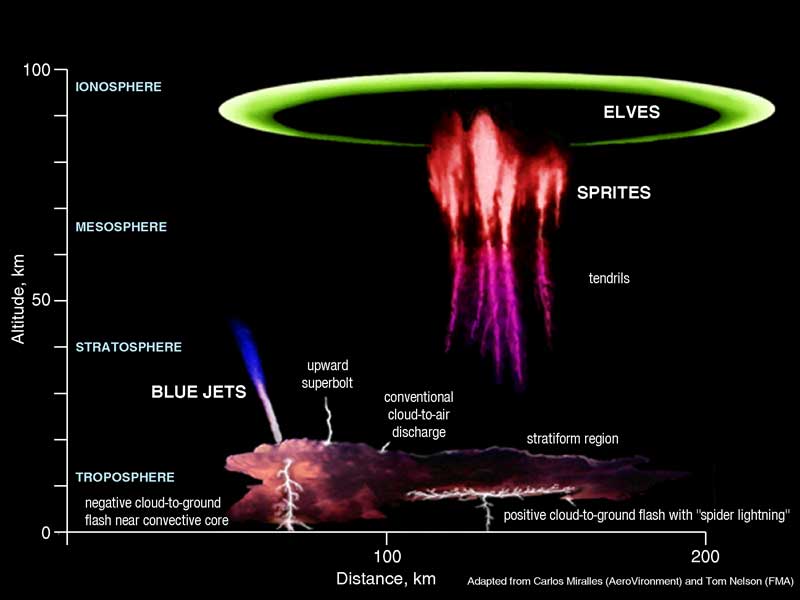
A new study is finally shedding light on an enigmatic atmospheric phenomenon known as “mesospheric ghosts” or “sprites”. These transient luminous events, akin to lightning yet dwelling far above the usual storm clouds, have long intrigued scientists and skywatchers alike.
The research, spearheaded by María Passas-Varo and her team, employs advanced spectroscopy to analyze these strange lights, revealing a composition that defies previous expectations and deepens our understanding of atmospheric chemistry.
Sprites are part of a wider family of transient luminous events occurring in the stratosphere and mesosphere, which also includes halos, elves, blue starters, gigantic jets, and pixies. Their durations range from sub-milliseconds (elves) to tens of milliseconds (sprites) to almost a second (gigantic jets).

Hunting for mesospheric ghosts is not easy, as this is a rather rare phenomenon. Sprites form about 50 to 85 kilometers above the surface, where the atmosphere is 100,000 times thinner than at sea level. To decipher their chemical composition, you need to aim a spectrograph at the exact altitude where the sprite forms. You not only need the right tools to observe these rare phenomena but also a great deal of perseverance and luck.
The researchers finally struck gold during an observation of a thunderstorm over the Mediterranean Sea. When they deciphered the colors of this luminous sprite, they found a surprising mix of elements they weren’t expecting.
A hidden connection to meteorites
The green glow, as it turns out, is not solely the work of excited atomic oxygen, as previously thought. Other chemicals that are involved include iron, nickel, and nitrogen. These components, remnants of meteors and interplanetary dust disintegrating upon entering our atmosphere, paint the upper atmosphere in vibrant green. This finding suggests a complex interplay between terrestrial and extraterrestrial materials, reshaping our understanding of the chemical dynamics at play in the Earth’s upper atmosphere.
Researchers say that this discovery calls for a reassessment of current atmospheric models. Traditionally, these models have not accounted for the presence of metallic species in transient luminous events. Understanding the chemistry of the upper atmosphere is vital for various applications, including satellite communication and weather prediction.
While the study has provided intriguing insights, it also raises new questions. For instance, the exact processes leading to the incorporation of metal atoms in mesospheric events remain unclear. Additionally, the role of these metallic species in the overall chemistry and physics of the upper atmosphere requires further exploration.
The findings appeared in Nature Communications.



